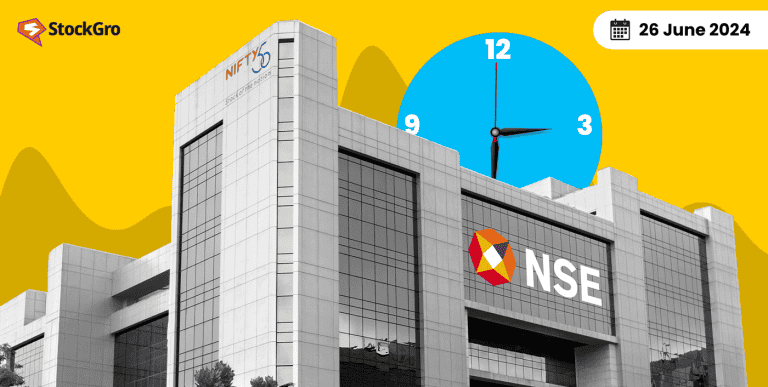
Navigating the world of stock investments and F&O (Futures and Options) trading can be a complex journey, especially when it comes to understanding tax implications.
Let’s dive into the nuances of how these activities are taxed, ensuring you have a clear grasp of what to expect this tax season.
Understanding the basics of investment taxation
Investments in listed shares, when held for over a year, are considered long-term investments. Long-term capital gains (LTCG) from these investments are taxed at a flat rate of 10% on gains exceeding ₹1 lakh. This seems straightforward, but what happens when you’re also actively trading in F&O?
F&O trading: Business income vs speculative income
Your tax advisor might have mentioned that all transactions in the stock exchange, including your long-term investments, could be treated as business transactions due to your F&O trading activities. This isn’t entirely accurate. The key is classification.
Differentiating business and investment income
- F&O trading: This must be treated as a business activity. Profits and losses from F&O are considered non-speculative business income under the Income Tax Act.
- Stock investments: If you hold shares as investments, they can still be classified under capital gains.
It’s crucial to maintain proper records and classify your investments clearly in your books. If the volume of transactions is high and the holding period is short, profits from the sale of shares might be treated as business income. However, investments held beyond one year can be treated as capital gains at your choice.
You may also like: Futures-and-options-income-tax
Potential changes in F&O taxation
Reports suggest that the government may consider categorising F&O transactions as speculative income rather than business income in the upcoming Union Budget 2024-25. If this change is implemented, F&O transactions will attract a higher tax rate of 30% plus cess compared to the current business income tax rates.
Impact of the proposed changes
- Higher tax liability: If F&O is treated as speculative income, it would attract a flat 30% tax rate, increasing the tax burden for traders.
- Limited offsetting: Currently, F&O losses can be offset against other business incomes. If reclassified as speculative, losses can only be offset against speculative gains, limiting tax planning flexibility.
Turnover calculation and tax audit requirements
Recent updates in the calculation of trading turnover have simplified tax audit requirements for F&O traders. Traditionally, the option premium was included in turnover, often inflating figures and triggering mandatory tax audits. Now, only the positive and negative differences are considered, reducing the reported turnover significantly.
Simplified turnover calculation example
For instance, if Raj buys 150 units of futures at ₹250 and sells them at ₹260 and buys 300 units of options at ₹350 and sells them at ₹340, the turnover is calculated as follows:
- Futures: (260-250) * 150 = ₹1,500
- Options: (340-350) * 300 = ₹3,000 (negative value ignored)
Total turnover: ₹1,500
This lower turnover often means F&O traders won’t need a tax audit unless specific conditions are met.
Also read: Future and options ban
When is tax audit applicable?
Tax audit requirements depend on your trading turnover:
- Turnover up to ₹2 crores: If profits are less than 6% of turnover and you’ve opted out of presumptive taxation in the past five years, and your total income exceeds the basic exemption limit, a tax audit is mandatory.
- Turnover between ₹2 crores and ₹10 crores: If more than 95% of transactions are digital, no tax audit is required, regardless of profit or loss.
- Turnover exceeding ₹10 crores: Tax audit is mandatory.
Reporting F&O trades and maintaining records
F&O trades must be reported in ITR-3 under PGBP (Profits & Gains from Business and Profession). Proper record-keeping is essential, including trading statements, expense receipts, and bank statements.
Example of F&O loss reporting
Consider Raj, who has a salary of ₹18 lakhs, interest income of ₹1 lakh, and rental income of ₹4 lakhs. He incurred a ₹3.5 lakh loss from F&O trading with a turnover of ₹35 lakhs. Raj’s expenses related to F&O are:
- Brokerage enrollment charges: ₹6,000
- Brokerage charges: ₹1,05,000
- Telephone expenses (50%): ₹20,000
- Internet expenses: ₹16,800
Total F&O expenses: ₹1,47,800
Raj’s F&O loss is:
- Loss from F&O: ₹3,50,000
- Less: expenses: ₹1,47,800
- Total F&O loss: ₹4,97,800
Total taxable income:
- Salary: ₹18,00,000
- Rental income: ₹4,00,000
- Interest income: ₹1,00,000
- Non-speculative loss: ₹4,97,800
Total taxable income: ₹18,00,000 + ₹4,00,000 + ₹1,00,000 – ₹4,97,800 = ₹18,02,200
Raj can carry forward the remaining loss to offset against future gains.
Also read: How to calculate fo turnover
Should F&O traders opt for the new tax regime?
Under Section 115BAC, the new tax regime offers simplified slab rates but disallows most deductions. F&O traders need to consider if the benefit of lower tax rates outweighs the loss of deductions. Remember, once opted for, you can only revert to the old regime once in a lifetime for business income.
Conclusion
Understanding the tax implications of trading in shares and F&O is essential for effective financial planning. Whether you’re classifying your income correctly, preparing for potential changes in F&O taxation, or navigating audit requirements, staying informed will help you make the best decisions for your financial future.
Always consult with a tax professional to tailor these guidelines to your specific situation.

